Montbéliarde cattle are a breed of dairy cattle which are used primarily for milk production and particularly for cheesemaking. It is form the Montbéliard region of France.
The ancestors of these breed were Bernoise cattle, but today the animals are their own distinct breed. Joseph Graber first used the name Montbéliarde, when exhibiting a group of cattle at the Langres agricultural competition in 1872.
Before this, the local stock from indigenous multipurpose cattle breeds such as Fémeline and Tourache (later known as Comtoise) had been improved by Mennonite farmers from Switzerland, and named Franco-Swiss. These animals were originally called the Alsatian breed until around the mid 1800s.
A herdbook for the Montbéliarde cattle breed was founded in 1889, and then the breed was officially accepted. The breed has been selected for good roughage conversion since 1980. And many animals were sold to the Midi region and Algeria after 1900.
Red Holstein cattle breed was crossed into the breed in the 1970s, and at the same time they sporadically crossed with Fleckvieh bulls. But the cross with Fleckvieh bulls was not very successful.
The Montbéliarde cattle were also used for crossing into the Danish Red and Vorderwalder cattle breeds in the 1990s. Crossbreeding of Montbéliarde and Holstein has become quite popular in the United States recently.
Today the Montbéliarde cattle are highly popular in France. And they have been exported to many countries which include Turkey, Tunisia, Slovakia, Switzerland, Russia, Portugal, Poland, New Zealand, Kuwait, Mexico, Ireland, Italy, Hungary, Luxembourg, Spain, Greece, United States, Columbia, Croatia, Ivory Coast, Chile, China, Austria, Brazil, Belgium, South Africa, Germany and many more. Read more information about this cattle breed below.
Montbéliarde Cattle Characteristics
The Montbéliarde cattle are medium to large sized animals of dairy type. They are quite similar to the red and white Holstein cattle. They are red pied in coloration with white heads and short horns.
Both bulls and cows usually have horns, and their horns are of lyre-shaped. Mature cows stand about 135-140 cm tall at the withers, and about 148 cm for the bulls.
Average live body weight of the bulls vary from 900 to 1200 kg. And average body weight of the cows vary from 600 to 700 kg. Photo and info from Wikipedia.
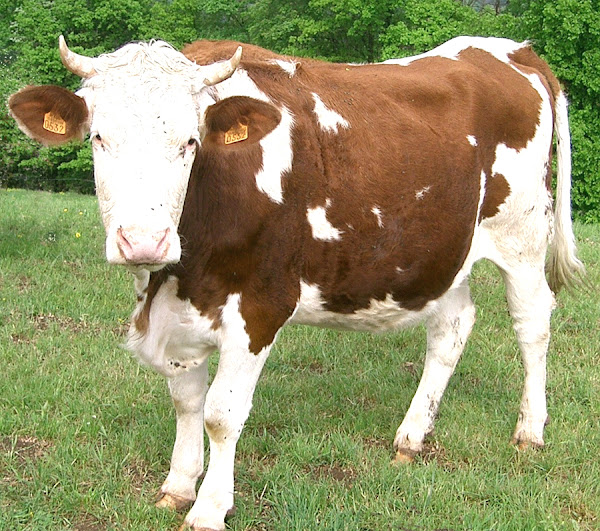
Uses
Montbéliarde cattle are mainly used as a dairy cattle breed in France. Their milk is used particularly for cheesemaking. But the breed is also good for meat production. Their meat is of good quality, and they have better beef characteristics than the Holstein cattle.
Special Notes
The Montbéliarde cattle are very hardy and, well suited to harsh climates and easily managed animals. They can ingest large quantities of rough forage and are not affected by the heat.
The cows are pretty good milk producers, although they are not as impressive in milking as the Holstein Friesians.
On an average, the cows can produce about 7486 liters of milk per lactation. Their milk contain about 3.45 percent of protein and about 3.9 percent butterfat content which are great for cheesemaking.
The Montbéliarde cattle are also good for producing quality beef. The cull cows too produce good quality carcasses with no excess fat. The calves grow relatively fast as compared to some other cattle breeds.
The animals are very fertile and long lived. Strong udders of the cows mean that they have high resistance to mastitis. This is an attractive trait for farmers who wish to keep their herd healthy and productive.
Today the breed has spread to many countries and is becoming popular for crossing with Holsteins to give improved longevity and fertility. However, review full breed profile of the Montbéliarde cattle in the following chart.
| Breed Name | Montbéliarde | |
| Other Name | Alsatian, Montbeliard | |
| Breed Purpose | Milk, meat | |
| Special Notes | Strong, hardy, good milk producers, fast growers, well adapted to harsh climates | |
| Breed Size | Medium to large | |
| Bulls | 900 to 1200 kg | |
| Cows | 600 to 700 kg | |
| Climate Tolerance | All Climates | |
| Coat Color | Red pied | |
| Horned | Yes | |
| Milk Yield | Good | |
| Rarity | Common | |
| Country/Place of Origin | France |
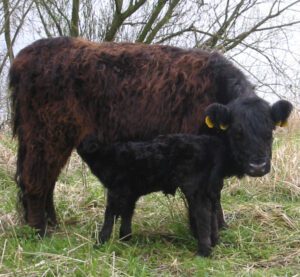
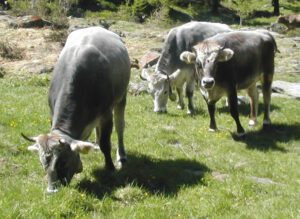
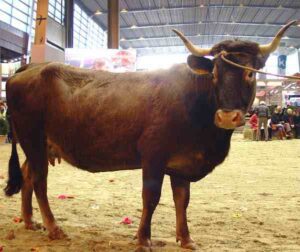
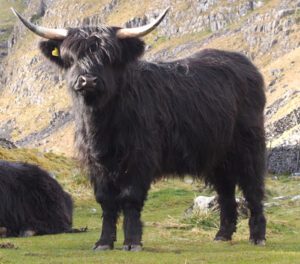
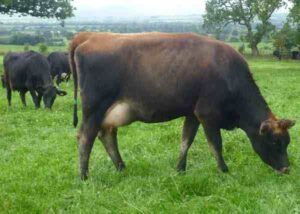
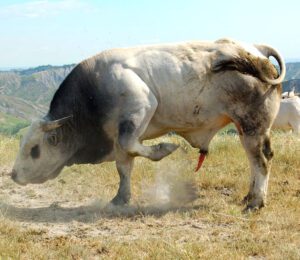
These cattle are awesome. My father had 4 on our farm.